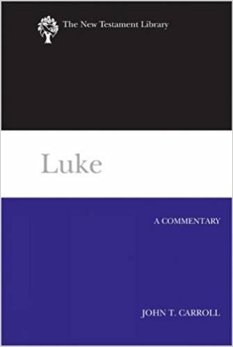 “Luke,” Richard Hays remarks in one of his books, “is above all a storyteller” (2016, 275). This characterization, brief as it is, highlights what might be the most important dimension of the lens that Union Presbyterian Seminary professor John T. Carroll brings to the table in his book, Luke: A Commentary, which was published in 2012.
“Luke,” Richard Hays remarks in one of his books, “is above all a storyteller” (2016, 275). This characterization, brief as it is, highlights what might be the most important dimension of the lens that Union Presbyterian Seminary professor John T. Carroll brings to the table in his book, Luke: A Commentary, which was published in 2012.
A number of New Testament scholars—maybe most prominent among them James Dunn—have highlighted the importance of remembering that the materials we read in the Gospels were in all likelihood first passed on as oral traditions by the earliest communities of Jesus followers. This insight is important at the very least because it prevents contemporary readers from making anachronistic assumptions about how the canonical Gospel texts were formed, but it doesn’t take away from the fruits that can be gathered by also exploring their literary shape and texture. Recognizing the predominantly oral origins of the Gospels and studying the narrative dynamics of their final forms aren’t mutually exclusive tasks. After all, the Gospel writers, in their own distinctive ways, were creative theologians in their own right, not merely haphazard compilers of community traditions.
This gives us one helpful way of framing how Carroll’s commentary fits into the ongoing stream of scholarship on Luke: while some commentaries devote most of their pages to reconstructing the historical world behind the text, and others delve most deeply into the twists and turns of interpretation history that have developed in front of the text, Carroll focuses his critical efforts on narrative analysis on the nuances of meaning in the text itself (9). Continue reading
